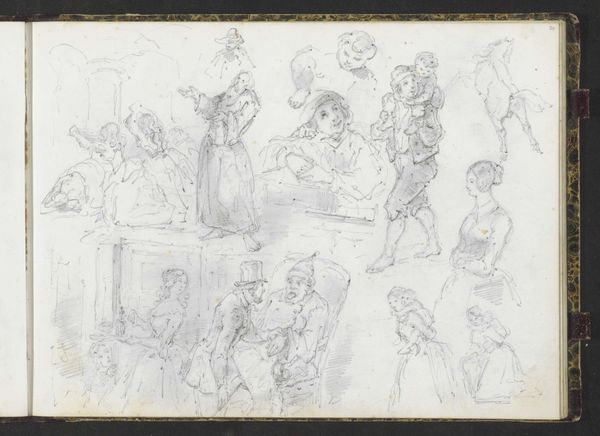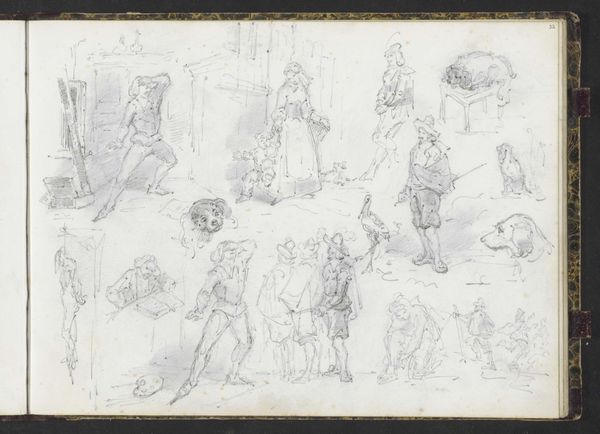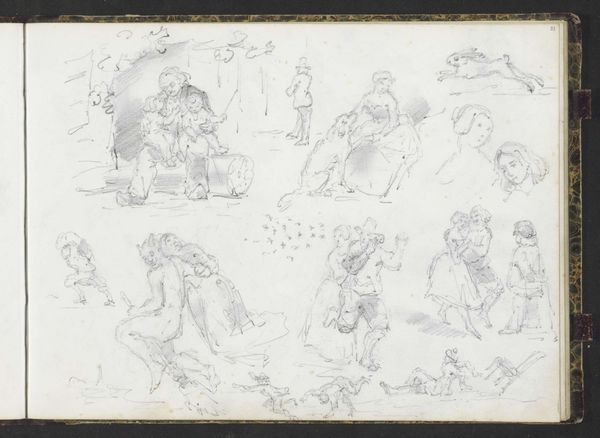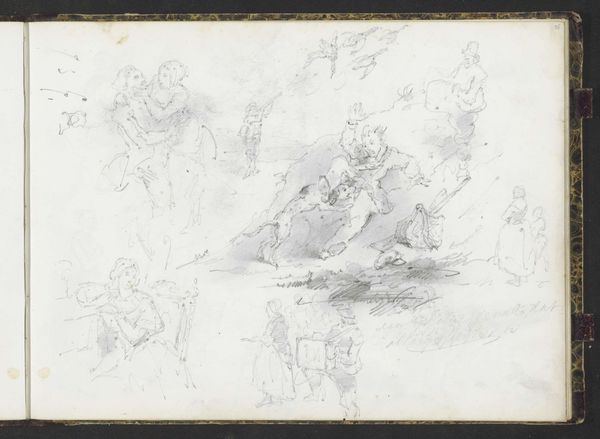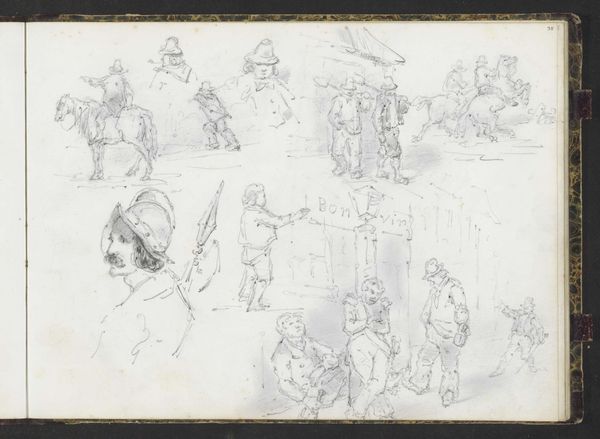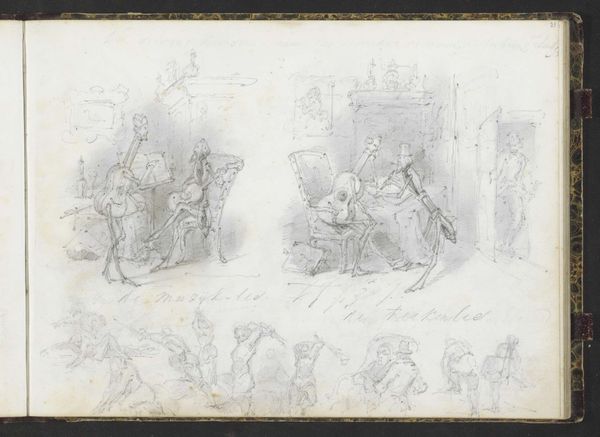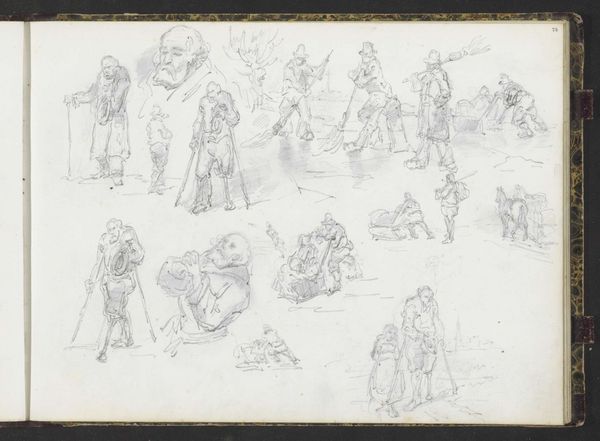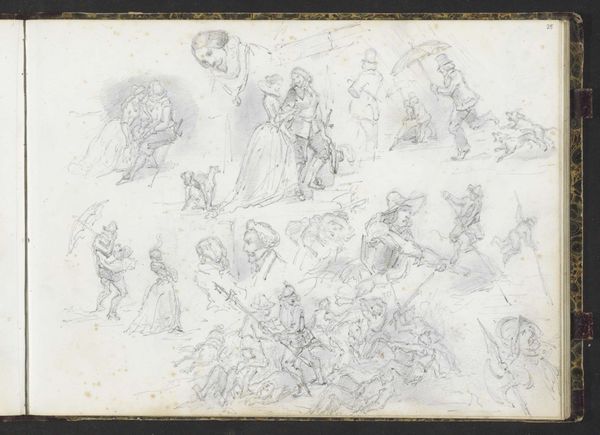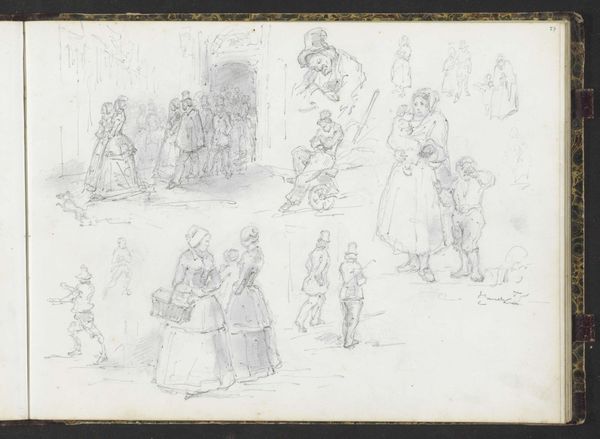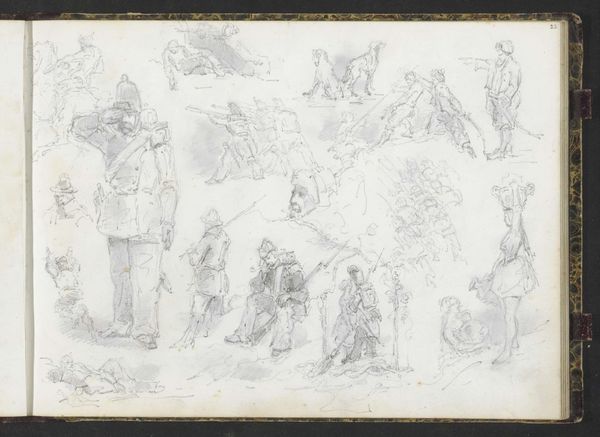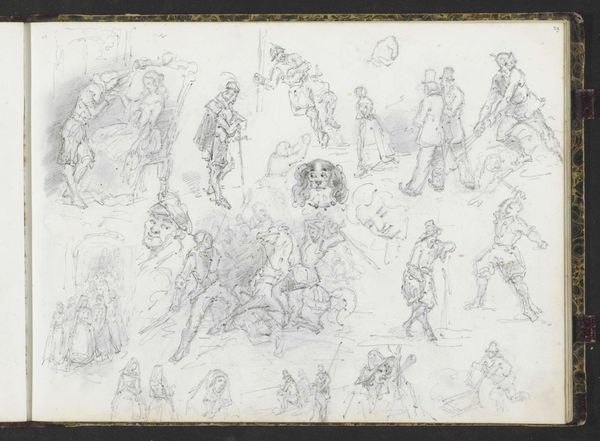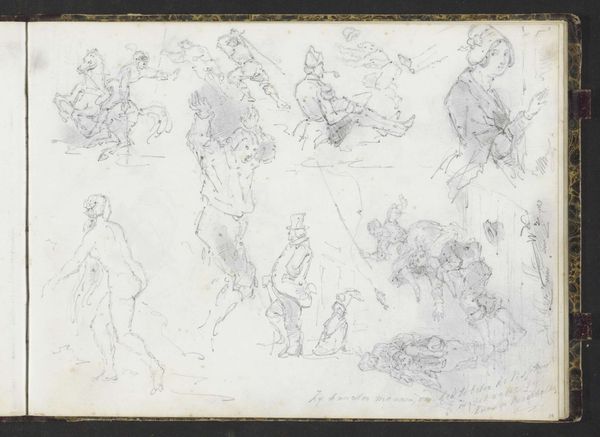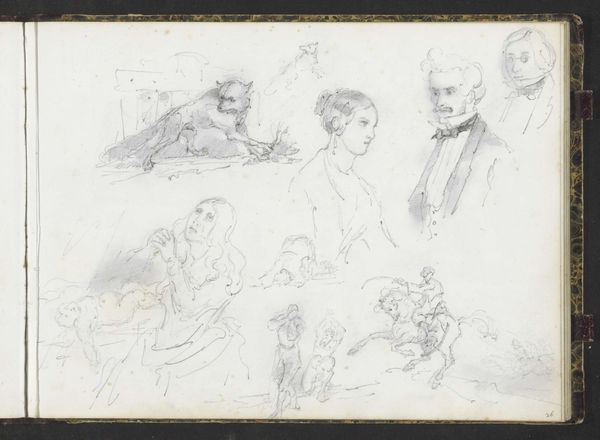
Studieblad met een gevecht, monniken en figuren in historisch kostuum 1839 - 1894
0:00
0:00
drawing, paper, pencil
#
portrait
#
drawing
#
landscape
#
figuration
#
paper
#
pencil
#
horse
#
history-painting
Copyright: Rijks Museum: Open Domain
Editor: This page of sketches, titled "Studieblad met een gevecht, monniken en figuren in historisch kostuum," made with pencil on paper sometime between 1839 and 1894 by Lambertus Lingeman, is full of energy. There's a real mix of different historical figures and scenes, almost like flipping through a history book. What social or political elements do you find most compelling about this sketchbook page? Curator: I am fascinated by how sketchbooks like these provide insight into the artistic process, revealing not just what artists chose to depict, but also the development of their ideas within specific social contexts. Think about the rise of history painting during the 19th century. What kind of national narratives were these artists trying to build or reflect in the cultural institutions, academies and the market? Editor: That makes sense, especially when you consider how history painting became a way to express national pride. Do you think Lingeman's drawings were meant to critique or celebrate that? Curator: That’s hard to say for sure without more context, isn’t it? This page provides the germs of ideas rather than fully formed statements, doesn't it? The costumes and historical references would have resonated with very specific socio-political implications at the time, even on such an informal level, shaping and reinforcing contemporary notions about historical power structures and even potentially providing critical commentary through visual juxtapositions or exaggerations. Do you get a sense of social critique or acceptance? Editor: It's intriguing to think about these sketches as subtle cultural commentary, beyond just historical exercises. I’m seeing a little of both maybe? I'll definitely look at similar works differently now, considering how art both shapes and mirrors societal beliefs. Curator: Exactly. That is what art history is about: making connections between works of art, visual culture and society and understanding its continuing resonance.
Comments
No comments
Be the first to comment and join the conversation on the ultimate creative platform.
